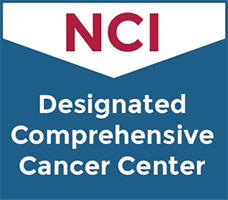Clinical Trials Search at Vanderbilt-Ingram Cancer Center
Biomarker Platform (Virtual Nodule Clinic) for the Management of Indeterminate Pulmonary Nodules
Lung
Lung
This clinical trial studies whether a biomarker platform, the Virtual Nodule Clinic, can be used for the management of lung (pulmonary) nodules that are not clearly non-cancerous (benign) or clearly cancerous (malignant) (indeterminate pulmonary nodules \[IPNs\]). The management of IPNs is based on estimating the likelihood that the observed nodule is malignant. Many things, such as age, smoking history, and current symptoms, are considered when making a prediction of the likelihood of malignancy. Radiographic imaging characteristics are also considered. Lung nodule management for IPNs can result in unnecessary invasive procedures for nodules that are ultimately determined to be benign, or potential delays in treatment when results of tests cannot be determined or are falsely negative. The Virtual Nodule Clinic is an artificial intelligence (AI) based imaging software within the electronic health record which makes certain that identified pulmonary nodules are screened by clinicians with expertise in nodule management. The Virtual Nodule Clinic also features an AI based radiomic prediction score which designates the likelihood that a pulmonary nodule is malignant. This may improve the ability to manage IPNs and lower unnecessary invasive procedures or treatment delays. Using the Virtual Nodule Clinic may work better for the management of IPNs.
Lung
N/A
Maldonado, Fabien
NCT06638398
VICC-IDTHO24059
Phase 1 Study of MRTX1719 in Solid Tumors With MTAP Deletion
This is a Phase 1, open-label, multicenter, study of the safety, tolerability, PK, PD, and anti-tumor activity of MRTX1719 patients with advanced, unresectable or metastatic solid tumor malignancy with homozygous deletion of the MTAP gene.
Not Available
I/II
Davis, Elizabeth
NCT05245500
VICC-DTPHI23101P
ResQ201A: Clinical Trial Of N-803 Plus TISLELIZUMAB And DOCETAXEL Versus DOCETAXEL Monotherapy In Participants With Advanced Or Metastatic Non-Small Cell Lung Cancer
Lung
Lung
This is a randomized, open-label, phase 3 clinical trial to compare the efficacy and safety of N-803 plus tislelizumab and docetaxel (experimental arm) versus docetaxel monotherapy (control arm). Enrolled participants will be randomized 2:1 to treatment in the experimental arm or the control arm. Participant randomization will be stratified by geographical region (North America vs Europe vs ASIA vs Other), NSCLC histology (squamous vs nonsquamous), and actionable genomic alteration (AGA); (epidermal growth factor receptor \[EGFR\]/anaplastic lymphoma kinase \[ALK\] vs OTHER AGA vs No AGA).
Lung
III
Wang, Shuai
NCT06745908
VICCTHO24569
Expanded Access Study for the Treatment of Patients With Commercially Out-of-Specification Axicabtagene Ciloleucel
Lymphoma
Lymphoma
The goal of this study is to provide access to axicabtagene ciloleucel for patients diagnosed with a disease approved for treatment with axicabtagene ciloleucel, that is otherwise out of specification for commercial release.
Lymphoma
N/A
Jallouk, Andrew
NCT05776160
VICC-XDCTT23452
A Study to Test the Addition of the Drug Cabozantinib to Chemotherapy in Patients With Newly Diagnosed Osteosarcoma
This phase II/III trial tests the safety, side effects, and best dose of the drug cabozantinib in combination with standard chemotherapy, and to compare the effect of adding cabozantinib to standard chemotherapy alone in treating patients with newly diagnosed osteosarcoma. Cabozantinib is in a class of medications called kinase inhibitors which block protein signals affecting new blood vessel formation and the ability to activate growth signaling pathways. This may help slow the growth of tumor cells. The drugs used in standard chemotherapy for this trial are methotrexate, doxorubicin, and cisplatin (MAP). Methotrexate stops cells from making DNA and may kill tumor cells. It is a type of antimetabolite. Doxorubicin is in a class of medications called anthracyclines. It works by slowing or stopping the growth of tumor cells in the body. Cisplatin is in a class of medications known as platinum-containing compounds. It works by killing, stopping or slowing the growth of tumor cells. Adding cabozantinib to standard chemotherapy may work better in treating newly diagnosed osteosarcoma.
Not Available
II/III
Not Available
NCT05691478
VICC-NTPED23198
De-Escalation of Breast Radiation Trial for Hormone Sensitive, HER-2 Negative, Oncotype Recurrence Score Less Than or Equal to 18 Breast Cancer (DEBRA)
Breast
Breast
This Phase III Trial evaluates whether breast conservation surgery and endocrine therapy results in a non-inferior rate of invasive or non-invasive ipsilateral breast tumor recurrence (IBTR) compared to breast conservation with breast radiation and endocrine therapy.
Breast
III
Chak, Bapsi
NCT04852887
NRGBREBR007
Expanded Access Program of AMTAGVI That is Out of Specification for Commercial Release
Melanoma
Melanoma
The objective of this expanded access protocol is to provide access to Out Of Specification (OOS) AMTAGVI treatment to patients.
Melanoma
N/A
Johnson, Douglas
NCT05398640
VICCMEL24579
Evaluation of Talazoparib, a PARP Inhibitor, in Patients With Somatic BRCA Mutant Metastatic Breast Cancer: Genotyping Based Clinical Trial
Breast
Breast
This research is to evaluate the effectiveness of Talazoparib as a potential treatment for metastatic breast cancer with a BRCA 1 or BRCA 2 mutation.
Breast
II
Abramson, Vandana
NCT03990896
VICCBRE2265
Measuring if Immunotherapy Plus Chemotherapy is Better Than Chemotherapy Alone for Patients With Aggressive Poorly Differentiated Sarcomas
This phase III trial compares the effect of immunotherapy (pembrolizumab) plus chemotherapy (doxorubicin) to chemotherapy (doxorubicin) alone in treating patients with dedifferentiated liposarcoma (DDLPS), undifferentiated pleomorphic sarcoma (UPS) or a related poorly differentiated sarcoma that has spread from where it first started (primary site) to other places in the body (metastatic) or that cannot be removed by surgery (unresectable). Doxorubicin is in a class of medications called anthracyclines. Doxorubicin damages the cell's deoxyribonucleic acid (DNA) and may kill tumor cells. It also blocks a certain enzyme needed for cell division and DNA repair. A monoclonal antibody is a type of protein that can bind to certain targets in the body, such as molecules that cause the body to make an immune response (antigens). Immunotherapy with monoclonal antibodies, such as pembrolizumab, may help the body's immune system attack the cancer, and may interfere with the ability of tumor cells to grow and spread. Adding immunotherapy (pembrolizumab) to the standard chemotherapy (doxorubicin) may help patients with metastatic or unresectable DDLPS, UPS or a related poorly differentiated sarcoma live longer without having disease progression.
Not Available
III
Davis, Elizabeth
NCT06422806
VICC-NTSAR24139
Comparing Two Methods to Follow Patients With Pancreatic Cysts
Pancreatic
Pancreatic
The purpose of this study is to compare the two approaches for monitoring pancreatic cysts. The study doctors want to compare more frequent monitoring vs less frequent monitoring in order to learn which monitoring method leads to better outcome for patients with pancreatic cysts.
Pancreatic
N/A
Tan, Marcus
NCT04239573
ECOGGIEA2185


